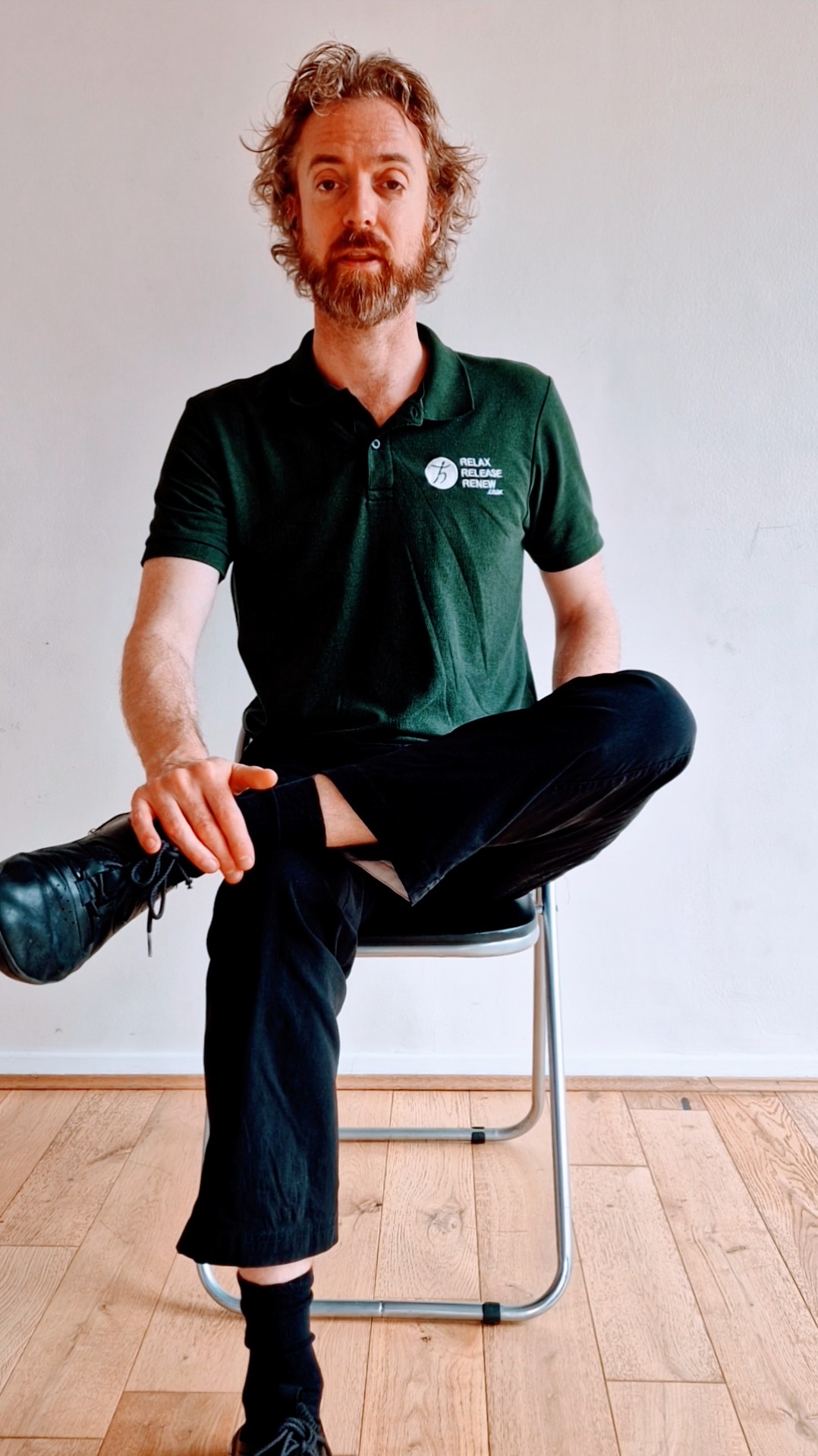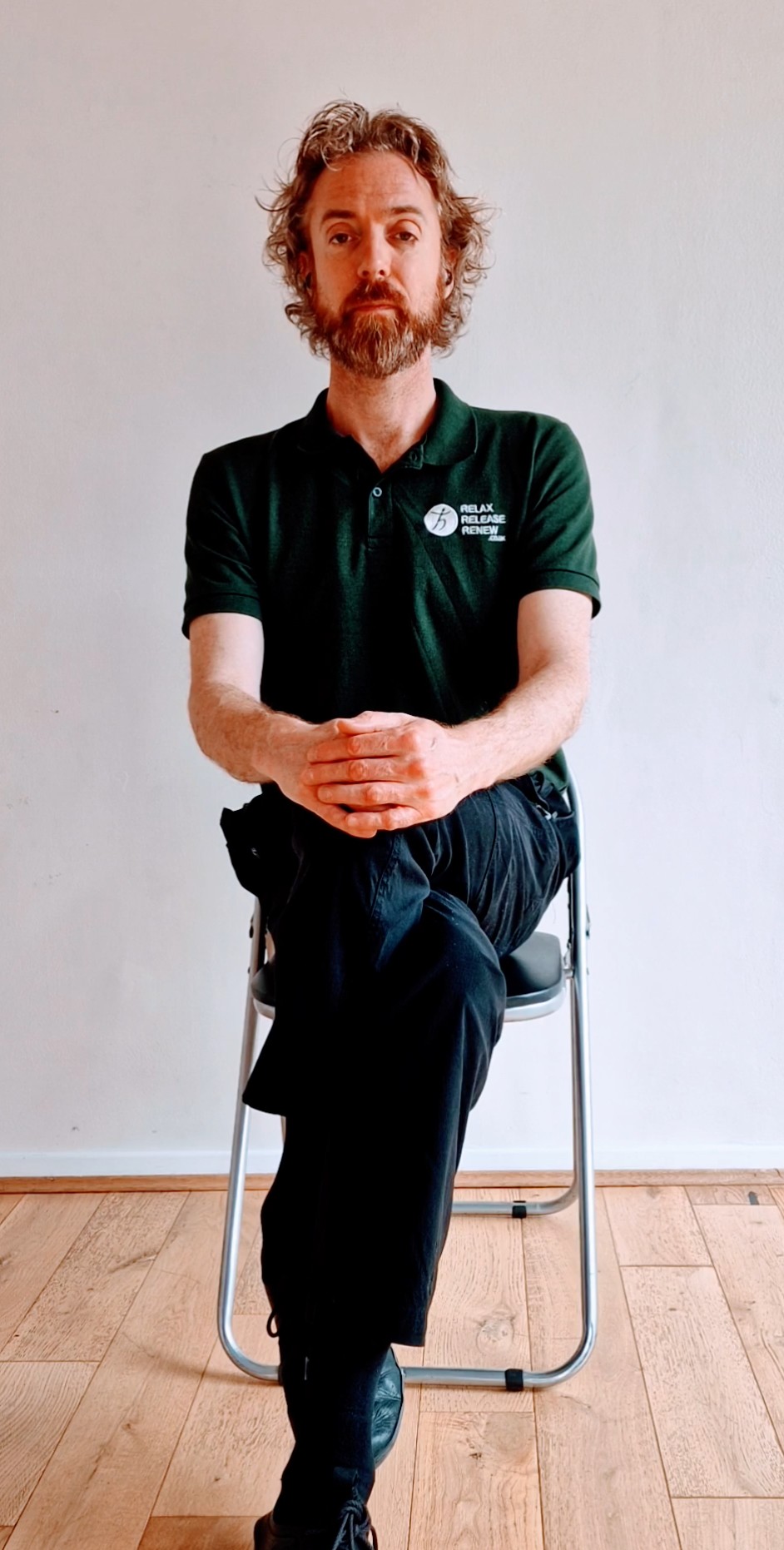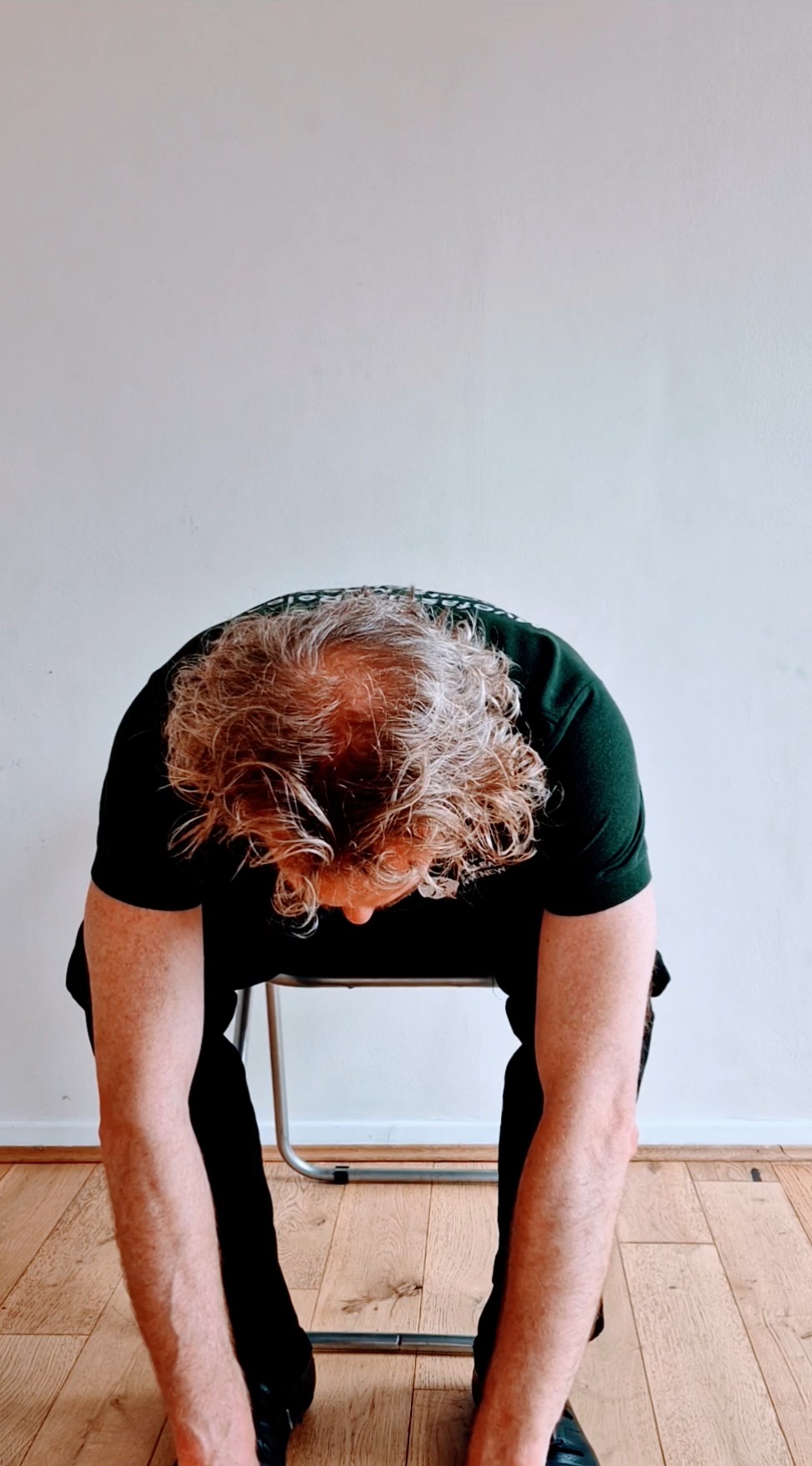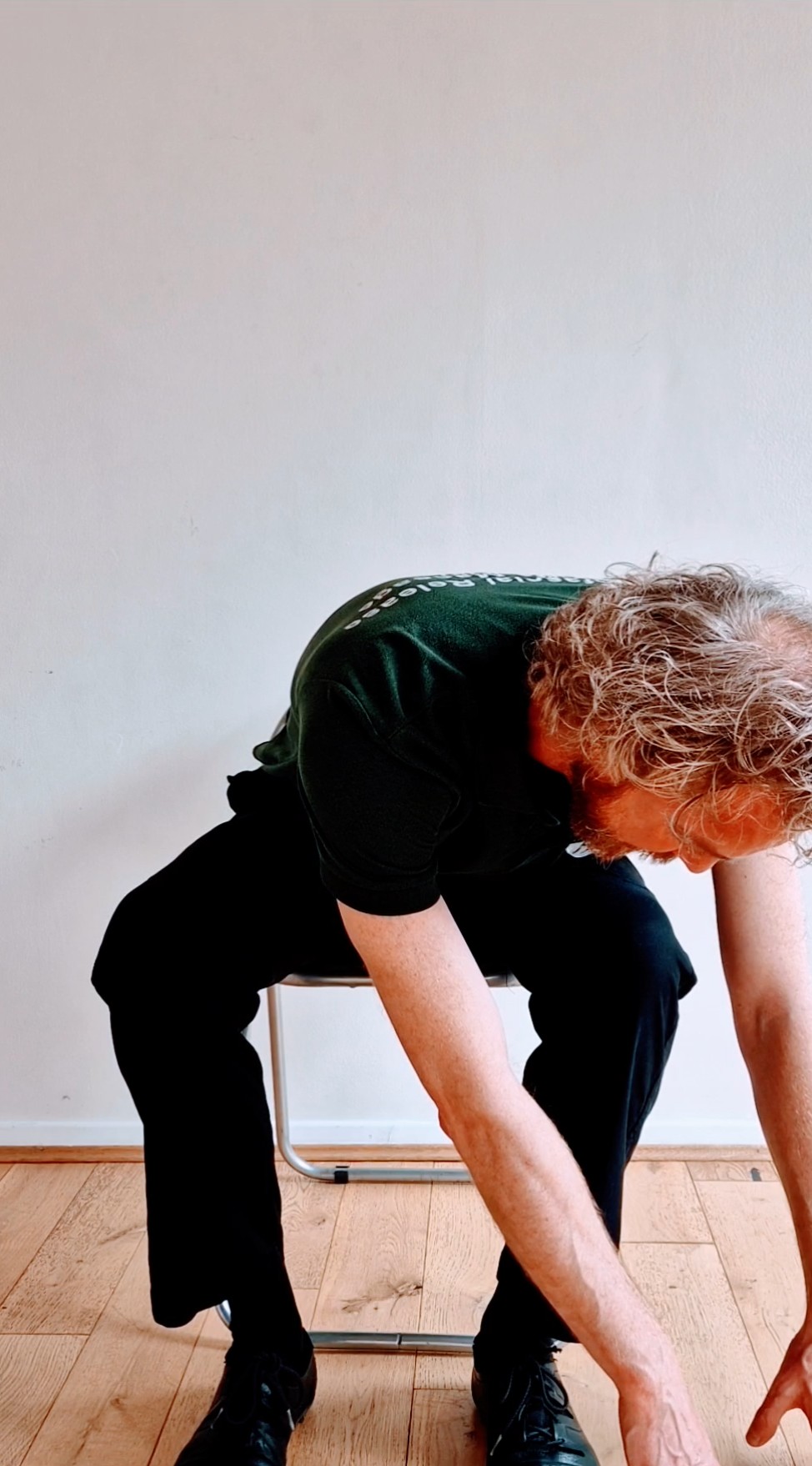These are a series of exercises that can be done at your desk. I jokingly say they can be done during a meeting (or Teams call) where you’re not actively involved in the meeting but are required to be present. You can look attentive, but you’re actually providing a bit of self care for yourself.
Equipment needed
Nothing special, but you are sitting in a chair
Part 1: Piriformis
This is a classic stretch.
1) Sit up tall, so you are resting on your sitting bones.
2) Cross one leg over the other, so the outside of one ankle is resting on top of the thigh of the other leg, closer to the knee than the groin.
3) Allow the knee to drop. I find it helpful to think that the knee drops because the thigh bone is turning at the hip rather than forcing the knee down. The other sitting bone shouldn’t be lifting off the chair as this is happening, which can happen if you are pushing the knee directly downwards. Be mindful of the knee in this position, as it is strong but the knee ligaments aren’t self-reinforcing as they are when the knee is straight.
4) Hold the stretch for at least 30 seconds, as these are big strong (and slightly less sensitive) muscles so they need time to react.
5) if you find this is really easy, then rock the pelvis forwards so you lean forwards over your knees. You are rolling towards the front of the sitting bones with a relatively straight back,
6) If you find it too hard to cross the leg over, put the foot of the under neath leg further out infront of you.

Part 2: Eagle legs glute stretch
This is a variation of the Eagle legs of yoga.
1) Sit up tall, so you are resting on your sitting bones.
2) Cross one leg over the other, so the outside of one ankle is resting on top of the thigh of the other leg, closer to the knee than the groin.
3) Allow the knee to drop. I find it helpful to think that the knee drops because the thigh bone is turning at the hip rather than forcing the knee down. The other sitting bone shouldn’t be lifting off the chair as this is happening, which can happen if you are pushing the knee directly downwards. Be mindful of the knee in this position, as it is strong but the knee ligaments aren’t self-reinforcing as they are when the knee is straight.
4) Hold the stretch for at least 30 seconds, as these are big strong (and slightly less sensitive) muscles so they need time to react.
5) if you find this is really easy, then rock the pelvis forwards so you lean forwards over your knees. You are rolling towards the front of the sitting bones with a relatively straight back,
6) If you find it too hard to cross the leg over, put the foot of the under neath leg further out infront of you.

Part 3: Cow legs variation
This is a variation of the cow legs position of yoga.
1) Sit up tall, so you are resting on your sitting bones.
2) Cross one leg over the other, so the outside of one ankle is resting on top of the thigh of the other leg, closer to the knee than the groin.
3) Allow the knee to drop. I find it helpful to think that the knee drops because the thigh bone is turning at the hip rather than forcing the knee down. The other sitting bone shouldn’t be lifting off the chair as this is happening, which can happen if you are pushing the knee directly downwards. Be mindful of the knee in this position, as it is strong but the knee ligaments aren’t self-reinforcing as they are when the knee is straight.
4) Hold the stretch for at least 30 seconds, as these are big strong (and slightly less sensitive) muscles so they need time to react.
5) if you find this is really easy, then rock the pelvis forwards so you lean forwards over your knees. You are rolling towards the front of the sitting bones with a relatively straight back,
6) If you find it too hard to cross the leg over, put the foot of the under neath leg further out infront of you.

Part 4: Dropped the pen forward bend and side stretch
This is a variation of the cow legs position of yoga.
1) Sit up tall, so you are resting on your sitting bones.
2) Cross one leg over the other, so the outside of one ankle is resting on top of the thigh of the other leg, closer to the knee than the groin.
3) Allow the knee to drop. I find it helpful to think that the knee drops because the thigh bone is turning at the hip rather than forcing the knee down. The other sitting bone shouldn’t be lifting off the chair as this is happening, which can happen if you are pushing the knee directly downwards. Be mindful of the knee in this position, as it is strong but the knee ligaments aren’t self-reinforcing as they are when the knee is straight.
4) Hold the stretch for at least 30 seconds, as these are big strong (and slightly less sensitive) muscles so they need time to react.
5) if you find this is really easy, then rock the pelvis forwards so you lean forwards over your knees. You are rolling towards the front of the sitting bones with a relatively straight back,
6) If you find it too hard to cross the leg over, put the foot of the under neath leg further out infront of you.


Full sequence
So, there may be one or two of these parts that are particularly helpful, but they can be put together to form quite a nice sequence that takes the hips through a good range of movement. The following video shows you them all together
Just a reminder that none of these stretches should produce a strong feeling of pain or discomfort. If they do then please cease doing them.
But I hope that you have found them helpful.
Thanks
Tim


